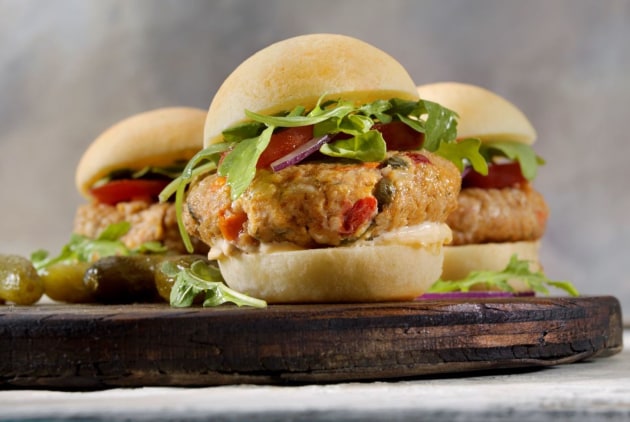Plant-based meats are marketed as a sustainable, healthy alternative to meat, but researchers at the University of Sydney are exploring how safe and nutritious plant-based meat really is.
Replacing meat with foods like legumes, beans and grains is nothing new – in fact, societies around the world have opted for plant-based diets for millennia.
However, in recent years plant-based diets have moved beyond incorporating a wide array of vegetable products, with a boom in commercially manufactured and processed plant-based meat alternatives, created specifically to mimic the taste and texture of meat.
The industry is already dominated by commercial heavyweights like Beyond Meat, Impossible Food, Nestle, V2 and Vitasoy, who manufacture a variety of alternatives, ranging from plant-based mince to dairy-free milk.
Researchers from the University of Sydney and University of Massachusetts analysed the nutritional and safety profile of plant-based meat alternatives, such as burgers, sausages and nuggets.
The researchers said there were several potential challenges associated with food safety and nutrition, including the chemical and microbial contamination of ingredients and food adulteration issues.
Researcher at the School of Chemical and Biomolecular Engineering Dr Diana Bogueva said that adopting a plant-based diet is among one of the most powerful things a person can do for the climate.
“It has been estimated that if highest-income nations adopted a more plant-centric diet, it could cut greenhouse emissions by around 61 per cent – potentially freeing up land currently used for livestock for carbon sequestration, and saving huge swathes of forest at risk of land clearing,” said Bogueva.
However, plant-based meat alternatives often contain high levels of food additives, salt, genetically modified ingredients and new sources of allergens.
How plant-based meat alternatives are made:
Protein isolated and functionalised
Proteins are extracted from plants and purified to produce flours, concentrates, or isolates. In some cases, they may be further processed to enhance their functionality.
Product formulation
Plant proteins are combined with other ingredients (like carbohydrates, lipids, salts, flavours, and colours) to form a plant-based product that has the required appearance, texture, chewiness, flavour, and cookability of a real meat product. In addition, nutrients may be added to match or exceed the nutrient profile of real meat.
Processing
The mixture of ingredients undergoes a series of processing operations that promotes the formation of meat-like structures and properties. These operations may include mixing, extrusion, shearing, moulding, and trimming.
Storage
The product, packaging materials, and environmental conditions must be designed so that the plant-based meat alternative remains safe and of high quality during storage, transportation, and distribution. This requires consideration and control of microbiological, chemical, and physical deterioration mechanisms.
There are also concerns about mislabelling (for example, labelling suggesting that the product is healthier than real meat), changes in protein quality, as well as vitamin or mineral deficiencies.
“It’s important that issues like food additives, the introduction of new allergens, as well as potential reductions in food quality, are all considered when designing the next generation of plant-based foods,” said Bogueva.
While the researchers believe that plant-based alternatives are the right direction for minimising climate change, carbon footprints and land clearing, there is an onus on commercial manufacturers to develop alternatives that don’t compromise nutrition.






